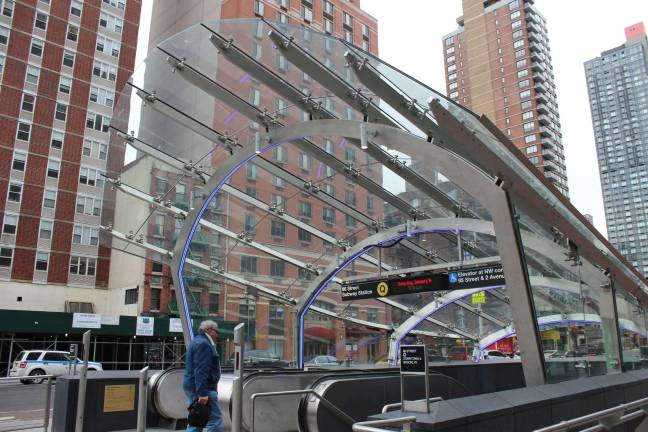Yorkville After the Subway

Within the Upper East Side real estate market, Yorkville, between 79th and 96th Streets east of Third Avenue, has long held a reputation as an enclave of relative affordability, especially in comparison to the tonier western stretches of the Silk Stocking District nearby. For years, the neighborhood’s range of housing options — including high-rise apartment complexes, prewar tenement buildings, co-ops and, increasingly in recent years, luxury condominium towers — has made it an attractive option for a diverse group of residents, particularly cost-conscious young families, retirees and recent college graduates willing to live a half-mile or further from the Lexington Avenue subway for the tradeoff of lower prices.
But with the opening of the Second Avenue subway earlier this year, one longstanding reason for Yorkville’s lower prices — its distance from the nearest subway line — has disappeared, fueling anxiety among some residents that the neighborhood’s improved accessibility will be accompanied by rent hikes.
To an extent, the new subway’s impact on the neighborhood’s rental market could be felt even before the Second Avenue line officially opened on New Year’s Day. November 2016 analysis by the real estate website StreetEasy showed that rents along Second Avenue have increased 27 percent over the previous five years, as the subway neared completion. Rents on First and Third Avenues saw jumps of 19 and 14 percent, respectively, over the same period — increases that are likely attributable, at least in part, to market anticipation of the new line’s completion.
But despite the upward market pressure that’s already been created by the new subway, there’s still plenty of value to be found in the neighborhood, particularly for potential buyers, said Amanda Brainerd, a broker with Brown Harris Stevens. “It’s really a cheap neighborhood, relatively speaking, for the more modest market,” she said, noting that it’s possible to find one-bedrooms in the $350,000 range in Yorkville — a price point buyers would hard-pressed to match even in farther-flung parts of Brooklyn like Bedford-Stuyvesant.
Brainerd expects prices to continue to rise in the years to come as a result of the new subway, and used the example of the High Line, which had a significant — but not immediate — impact on the Chelsea market, as a rough analogy. “It took a little bit of time for the High Line to have a real impact,” she said, adding that she expects the subway’s true impact on Yorkville prices to manifest itself within the next two years.
The uncertainty surrounding a controversial waste transfer station on the East River at 91st Street helped keep prices down in Yorkville for many years. With construction now underway, Brainerd believes that fears over idling trucks and diminished air quality around the site have subsided somewhat, opening the door for a subway-fueled pickup in the market.
“Right now, there’s a window of opportunity where there’s still enormous value to be had in Yorkville if you purchase,” she said. “Down the line, I see those values going away and prices going way up because of the subway.”
Newer developments in the neighborhood are generally luxury condominiums with big floor plans and bigger prices, like 20 East End Avenue, an 18-story condo building designed by Robert A.M. Stern where listings started at $4.5 million for a two-bedroom. But even within the higher-end market, Yorkville prices are often moderate in relation to other Manhattan neighborhoods. Brainerd pointed to a four-bedroom, five-bath co-op at 25 East End Avenue recently listed for just under $4 million. A similar listing in Gramercy, she said, could go for $10 million.